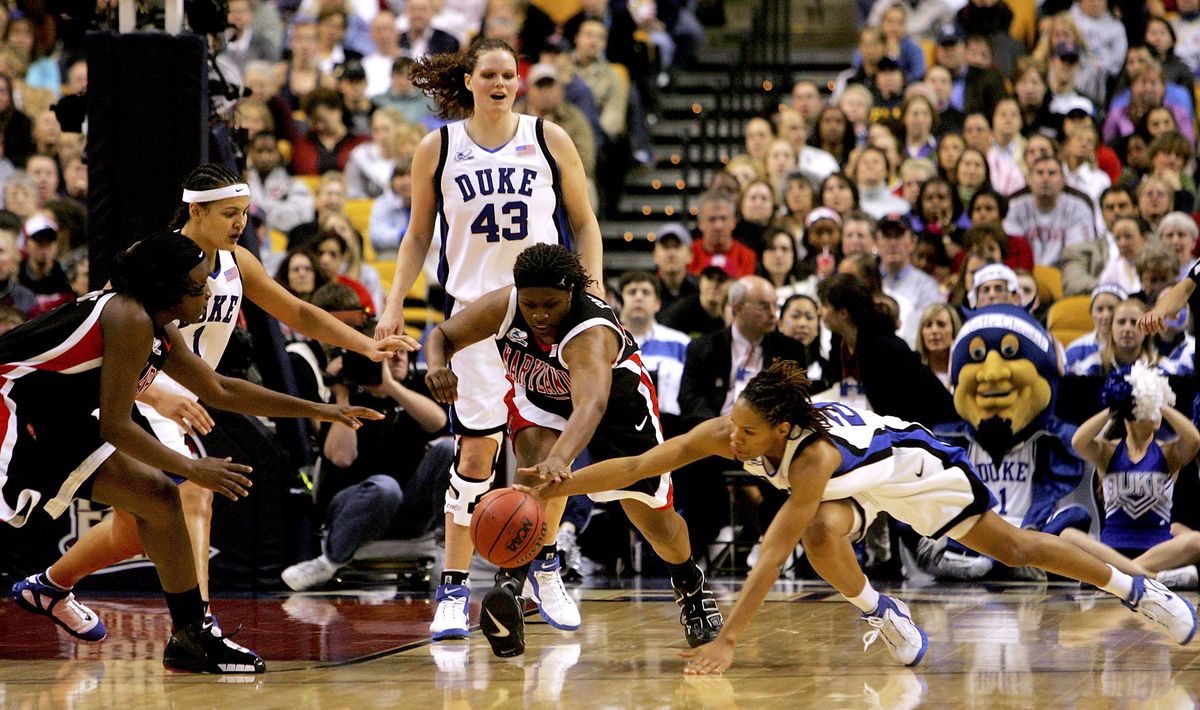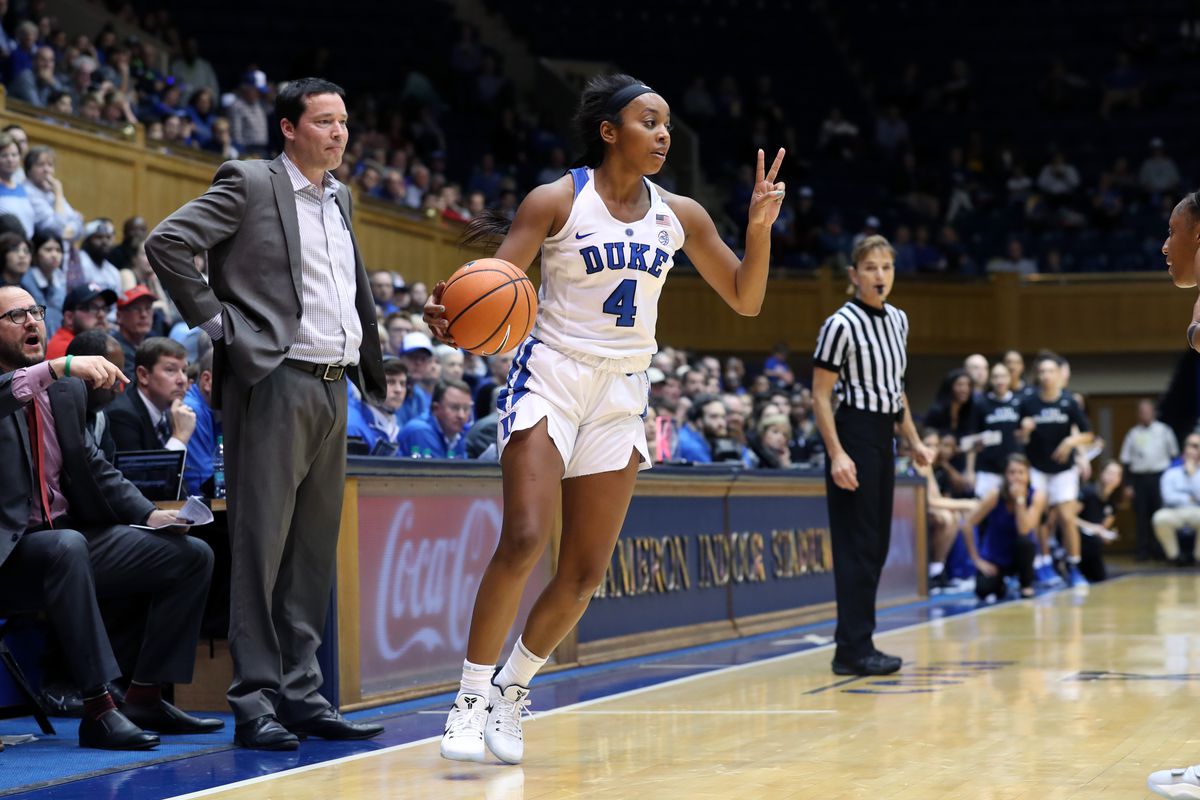The rivalry between Duke University and the University of Maryland runs deep.
In men’s basketball, for years, the ACC has been defined by two blue bloods: Duke and North Carolina. In the old ACC, Maryland liked to think of itself as that third team crashing the party. Terp students and alums are familiar with the t-shirt that features the logos of Maryland (the good), UNC (the bad) and Duke (the ugly).
Why is UNC merely bad and Duke ugly? The Tar Heel men actually have more national championships (six) than the Blue Devil men (five); on the women’s side it’s 1-0 in favor of Carolina Blue. But there’s just always been something about Duke that has inspired hatred not only from their classic rival UNC, but also from every other school across the country. The Blue Devils happily wear the villain hat, knowing all this hate stems from respect.
The Maryland men can only hope to one day achieve what Duke has achieved, but they had their moment sharing the spotlight with the Blue Devils. Duke and Maryland owned the beginning of the new millennium, winning national titles in 2001 and 2002, respectively. The Blue Devils defeated the Terps in the 2001 Final Four—it was an epic ACC showdown, but was topped five years later on the women’s side when the good, the bad and the ugly comprised 75 percent of the Final Four.
The Lady Terps’ run to the 2006 natty could not have been more memorable, considering they were lucky enough to defeat their second-biggest rival, the bad Tar Heels, in the national semifinal, and their biggest rival, the ugly Blue Devils, in the final—with the latter victory coming courtesy of “The Shot” from Kristi Toliver that sent the game to overtime.

They’re still bitter about that game down in Durham, where, as mentioned, an NCAA women’s title has never been delivered. (The Blue Devil women have come so close; they were also the runner-up in 1999 and went to the Final Four in 2002 and 2003). It didn’t stop Duke star Mo Currie from getting along with Terp star Crystal Langhorne as teammates on the Washington Mystics in the WNBA, but it still stings to this day.
The Blue Devils exacted a bit of revenge when standout Terp Lexie Brown decided to transfer to Duke in 2015, but, while Brown became a bigger star in Durham than she was in College Park, she was a part of two Final Four Maryland teams and never led the Blue Devils past the Sweet 16. Still, in her post-college life, her loyalties definitely lie with the blue and white and not the red, black and gold, which stings a little.

The reverse likely will be ture for Oluchi Okananwa, who played two years with Duke and is now slated to play her final two with the Terps after announcing her decision to transfer to Maryland last Friday.
Okananwa has the potential to become a big star; in fact, we’ve already seen it come to fruition on many occasions—just not consistently, which is why her career scoring average of 9.9 points per game doesn’t blow you away. She loves playing in a conference tournament, having won ACC Tournament MVP this past season and averaging 15.2 points and seven boards across five career ACC Tournament games. Her 3-point efficiency wasn’t good in the 2024 ACC tourney, but how about 6-of-8 in 2025 to go along with a 13-of-15 effort at the stripe?
And while we’re talking about moments where her star potential has come to fruition, it might be pertinent to mention her first collegiate stat line: 22 points, 12 rebounds, two assists, three steals, 8-of-11 from the field, 1-of-2 from three, 5-of-6 from the line, one turnover and zero fouls committed in 25 minutes.
Okananwa, a 5-foot-10 guard, has knocked down her fair share of 3s (58 over two seasons) at a 32.4 percent clip, and with some work those numbers will improve. She’s also the consummate hustle player, an excellent rebounder for her height—tied for second on Duke’s 2024-25 Elite Eight squad in boards per contest—who can make tough plays in the paint against much taller defenders, including on offensive putbacks.
Okananwa is the third of three huge transfer acquisitions Maryland head coach Brenda Frese has locked down since the 2024-25 season ended. First, Gracie Merkle announced her decision to move from Penn State to College Park, and then Yarden Garzon revealed she was coming over from Indiana.
Terp fans have seen the damage Garzon can do from beyond the arc. She’s 6-foot-3 and shot a staggering 45.8 percent from deep as a freshman, with 70 makes. After three collegiate seasons, she now has 220 3-point makes at 42.6 percent, including 88 makes this past season. Her averages have been pretty consistent over the three years, with 2024-25 seeing her notch career bests in points (14.4), rebounds (5.4), assists (3.2) and steals (1.3).
Merkle, meanwhile, sported the third-best field goal percentage in the nation (67 percent) this past season, and was even better as a freshman at Bellarmine (70.2 percent). The 6-foot-6 center was good for 15.5 points, 8.6 rebounds and 1.5 blocks per game as a Nittany Lion. During Frese’s tenure, the Terps have rarely tried to win with height, but it was 6-foot-5 Terp Laura Harper (now the head coach at Towson) who took home the Final Four Most Outstanding Player honor in 2006. Now, in addition to all its other strengths, Maryland has someone who can hang, offensively and defensively, with the tallest players in the country, such as UCLA’s 6-foot-7 Lauren Betts, who the Terps may meet deep in the 2026 NCAA Tournament.
Okananwa, Garzon and Merkle join transfers from the 2024-25 season in Kaylene Smikle, Saylor Poffenbarger and Mir McLean on the Terps’ 2025-26 roster. Maryland was slated to have another key transfer contributor in Allie Kubek, but she made a last-second decision to leave College Park. Smikle led the team in scoring last year, and Poffenbarger and McLean are very good players as well, so Maryland will be loaded even without Kubek. Don’t forget they also return Frese recruit Bri McDaniel, who is a star and whose absence during the second half of last season likely prevented the Terps from going far deeper in the NCAA Tournament than the Sweet 16.
In addition to Smikle, Poffenbarger, McLean and Kubek, Maryland had two other key transfer contributors in Sarah Te-Biasu and Christina Dalce. All the key transfer contributors were brand new save for Kubek, who was in her second season in College Park. Frese threw together a roster that had very little established chemistry and went to the Sweet 16! The team likely would have gone much further with McDaniel.
So there’s reason to believe Maryland will find similar success in 2025-26 with its three new transfers—a transfer portal triumph that could power the program to its first national championship in 20 years.





